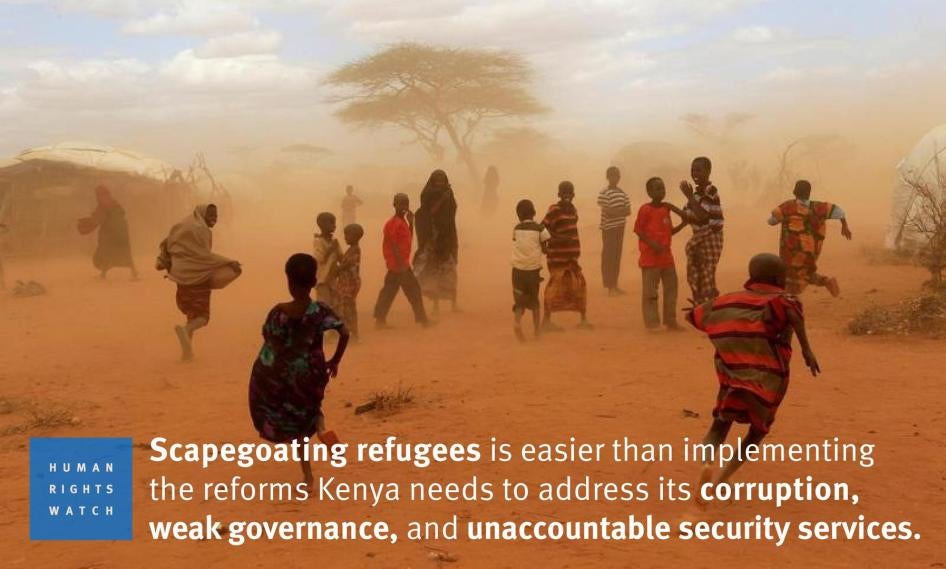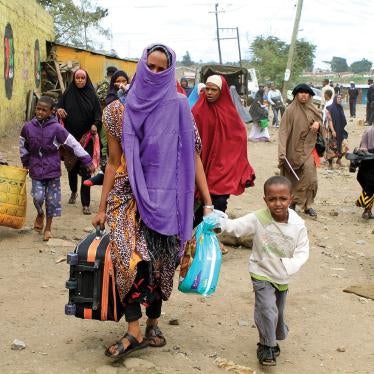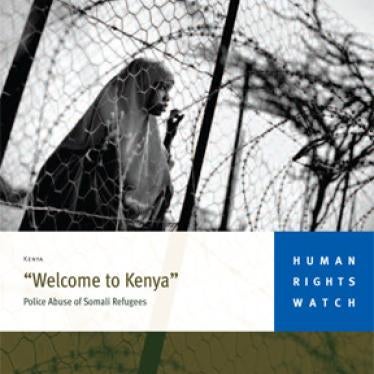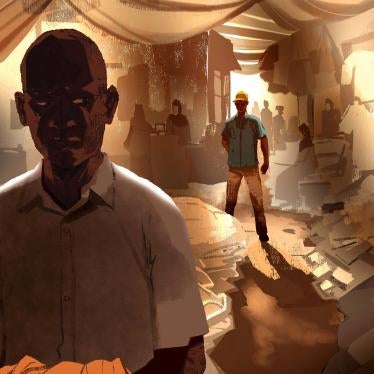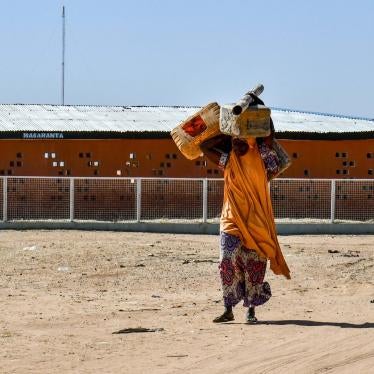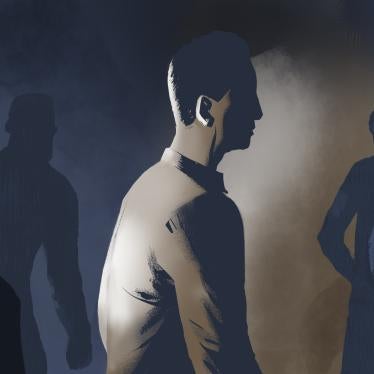(Nairobi) – The Kenyan authorities should reconsider a new plan to forcibly move 50,000 registered refugees and asylum seekers from cities to overcrowded and underserviced refugee camps. Interior Cabinet Secretary Joseph Ole Lenku made the announcement on March 26, 2014, three days after unidentified attackers killed six people in a church near Kenya’s coastal city of Mombasa.
Such a move would violate a July 26, 2013 Kenyan High Court ruling, which quashed an identical government refugee relocation plan from December 2012. The court said the relocation would violate refugees’ dignity and free movement rights, and would risk indirectly forcing them back to Somalia. It also said the authorities had not proved that the move, which followed a series of grenade and other attacks in Kenya by unidentified people, would help protect national security.
“Kenya is once again using attacks by unknown criminals to stigmatize all refugees as potential terrorists,” said Gerry Simpson, senior refugee researcher. “This plan to force tens of thousands of refugees into appalling conditions in severely overcrowded camps flouts a crystal clear court ruling banning such a move.”
Ole Lenku said on March 26 that,“All refugees residing outside the designated refugee camps of Kakuma and Dadaab are hereby directed to return to their respective camps with immediate effect.” Citing “emergency security challenges” in Kenyan towns, he also said that, “Any refugee found flouting this directive will be dealt with in accordance with the law.”
In January 2013, Human Rights Watch called on the authorities to drop their first relocation plan. Human Rights Watch said then that the authorities had failed to show, as international law requires, that the plan was either necessary to achieve enhanced national security or the least restrictive measure possible to address Kenya’s national security concerns. The plan also unlawfully discriminated against refugees because it would allow Kenyan citizens to move freely while denying refugees that right.
Kenyan police operations in Nairobi and Mombasa have frequently committed serious human rights violations against both refugees and Kenyan citizens in the wake of attacks.
A May 2013 Human Rights Watch report described how Kenyan police in Nairobi tortured, raped, and otherwise abused and arbitrarily detained at least 1,000 refugees, including women and children, between mid-November 2012 and late January 2013 following grenade and other attacks. The police called the refugees “terrorists” and said they should move to the camps.
The new relocation order comes after numerous statements by senior Kenyan officials, going back as far as March 2012, calling on Somali refugees to return to Somalia.
On January 17, the United Nations refugee agency, UNHCR, issued guidelines on returns to Somalia and called on countries not to return anyone before interviewing them and ensuring they do not face the threat of persecution or other serious harm if returned. On January 28, UNHCR also issued a news release about the guidelines, appealing to all governments “to uphold their obligations” not to forcibly return anyone to Somalia unless they are convinced the person would not suffer persecution or other serious harm upon return.
UNHCR said that southern and central Somalia “remains a very dangerous place” and that it “consider[s] the options for Somalis to find protection from persecution or serious harm within Southern and Central Somalia to be limited.” The agency said that this “is especially true for large areas that remain under the control of the Islamic militant group Al-Shabaab,” which “prohibits the exercise of various types of freedoms and rights, especially affecting women” and uses “public whipping, amputation … and beheadings” as punishment.
UNHCR also said that al-Shabaab attacks in Mogadishu, the capital, that killed civilians had increased in 2013 and that the Somali authorities are “reported to be failing to provide much of [the] population with basic security.”
Kenyan authorities should not press refugees to return to Somalia. Such pressure would violate Kenya’s obligations not to forcibly return – or refoule – refugees to situations of persecution or generalized violence.The ongoing humanitarian crisis in the Dadaab camps in Kenya – where about 400,000 refugees are crammed into space meant for 170,000 – and the lack of properly developed new camps there or near the Kakuma camps means that any transfer of refugees from the cities to the camps would also breach Kenya’s international legal obligations. They require Kenya not to adopt “retrogressive measures” that would negatively affect refugees’ rights to adequate standard of living – including food, clothing and housing – and to health and education.
On March 10, the international humanitarian organization Médecins sans Frontières, which runs health care programs in the refugee camps, released a report describing the serious humanitarian conditions and insecurity in the camps.
Foreign donors to Kenya and UNHCR should oppose the new relocation plan, based on its inevitable violation of refugees’ rights to free movement, basic social and economic rights, and the right not to be forcibly evicted.
“The new plan risks riding roughshod over Kenya’s High Court and a range of refugees’ fundamental rights,” Simpson said. “Foreign donors to Kenya and UNHCR should encourage Kenya to abandon the plan.”
